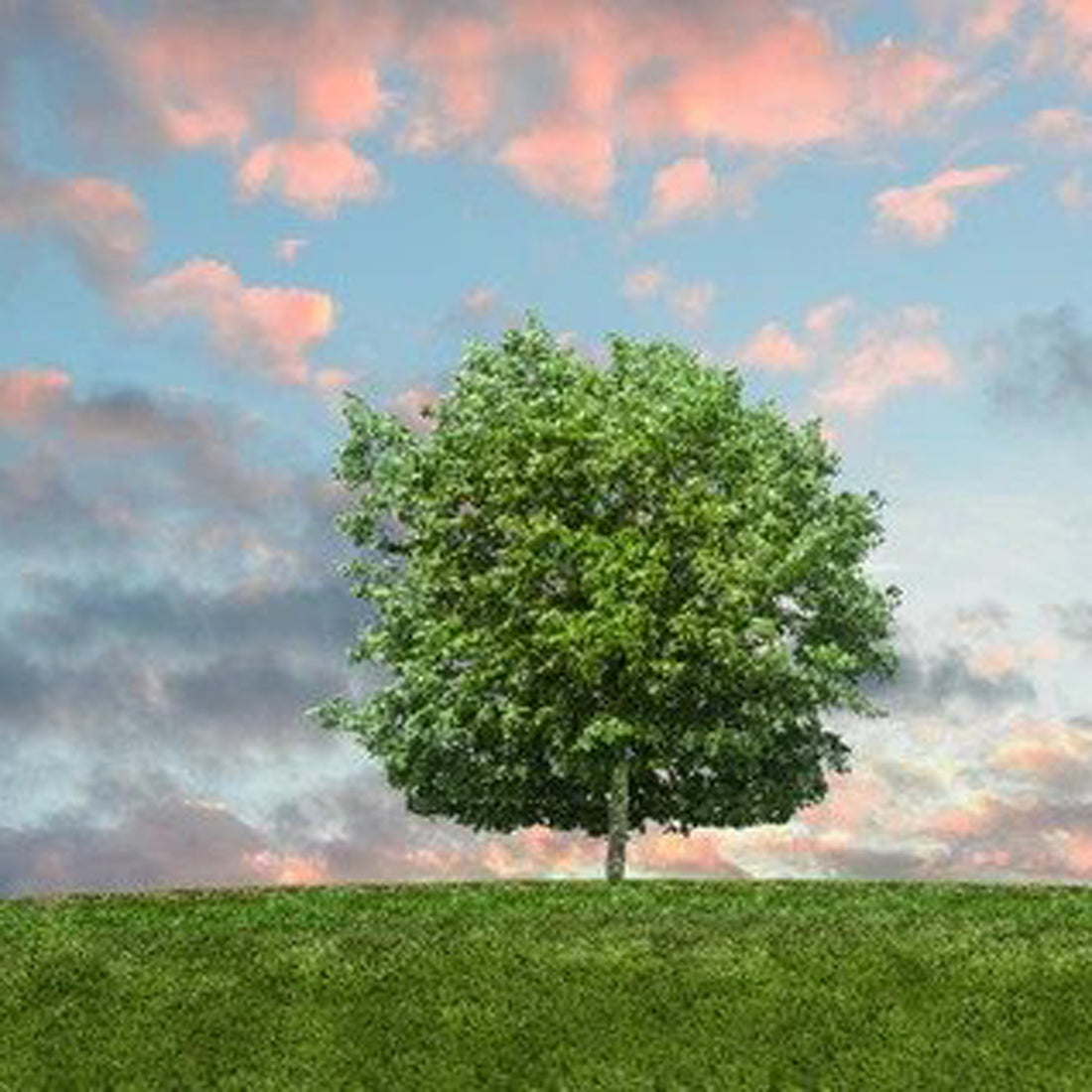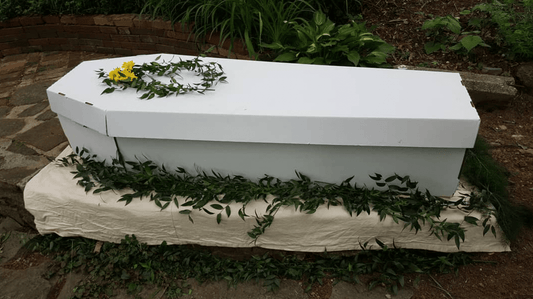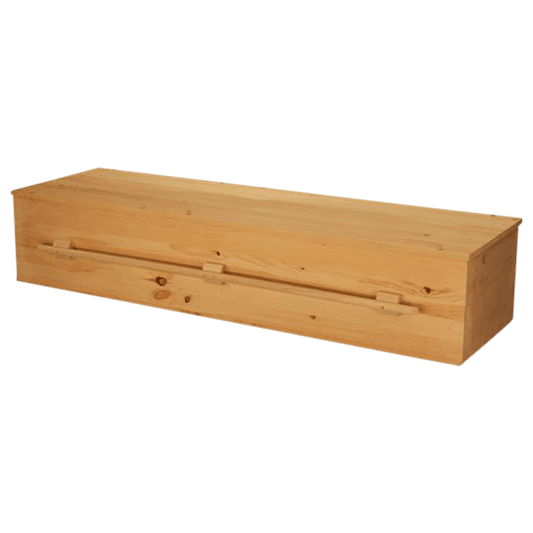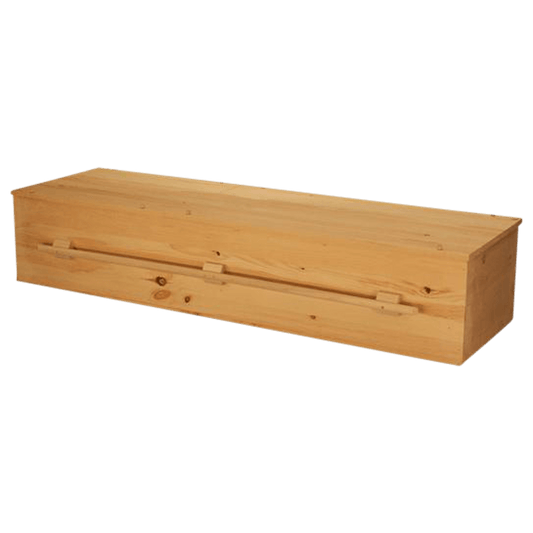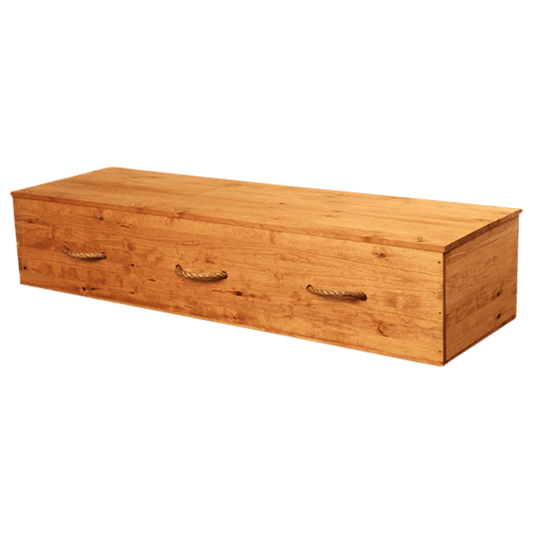Choosing between a green natural burial and a traditional burial using the embalming process is among the first decisions you will need to make when funeral planning. Often, the choice for a natural burial will reflect the departed's desire to have a greener end-of-life celebration and an embracing of sustainability values during life. Read on as Titan compares traditional burial approaches versus green burials, including the availability and benefits of natural burial caskets.
Table of Contents
- What Is A Green Natural Burial?
- What Is A Natural Burial Casket?
- Why Choose A Green Natural Burial?
- How To Find A Green Cemetery
- Other Green Burial Locations
- Green Funeral Services
- What Is The Cost Of A Natural Burial?
- What Is A Traditional Burial?
- What Is Embalming?
- Is Embalming Required?
- Why Is Embalming So Popular?
- What Does Embalming Do For The Body?
- Embalming Alternatives
What Is A Green Natural Burial?
As the name suggests, a green, or natural, burial emphasizes an environmentally sustainable burial. This type of burial is fairly simple and relatively inexpensive.
The purpose of a green burial is to allow the body to decompose naturally. As such, a natural burial occurs with as few impediments as possible: the body is not prepared with any chemicals (such as embalming fluids) nor is the body cremated. Instead, it is placed inside an eco friendly casket, coffin, or shroud, and is buried directly in the gravesite without a concrete vault.
Green, natural burials have gained popularity in recent years due in part to their low impact on the environment and overall simplicity. However, this burial practice has been around for centuries and is common amongst Jewish and Muslim communities.
What Is A Natural Burial Casket?
A natural burial is a traditional coffin or casket is crafted using eco-friendly interior and exterior materials. Often built from pine wood, bamboo, or willow, natural burial caskets are elegant in their simplicity and perfectly suited for viewings and funeral services prior to in-ground burials. When placed directly into the earth, without the use of a grave liner, these natural caskets and coffins will break down over time.
Why Choose A Green Natural Burial?
Many people prefer this natural burial approach for several reasons:
- Religious Purposes: Many Jewish and Muslim customs align with the requirements of a green burial.
- Environmental Factors: Many people wish for their departure to impose a minimal impact on the environment. Green burials help conserve resources – this burial method simply requires fewer materials such as wood, steel, and concrete. Green burials also eliminate the need for harmful chemicals and assist in preserving (and even restoring) the burial area.
- Reconnecting with Nature: Many people opt for a natural burial and find peace in knowing their body will soon be one with the earth.
- Simplicity: Wrapping a body in a shroud, or blanket, and being placed in a simple green burial casket, usually made from pine wood, is ideal for people who prefer a simple exit from the physical world.
-
Cost: Due to their simple nature, green burials tend to be inexpensive. Green burials eliminate such expenditures as embalming, extravagant burial containers, and concrete vaults.
How To Find A Green Cemetery
In 1998, the first green cemetery opened in the United States. Since then, around sixty more have opened. Also, many cemeteries have a designated section for natural burials. For more information on where to find green cemeteries, the New Hampshire Funeral Resources, Education & Advocacy has compiled a list of green cemeteries by state. For more information, click here.
Some of the more conservation-oriented green cemeteries help preserve the land by eliminating the use of potentially harmful materials such as pesticides, herbicides, and even some types of fertilizer. Many green cemeteries have restrictions in terms of the materials allowed to be used in burying a loved one. Burial caskets, coffins, and shrouds are usually limited to those made of natural materials – these materials are biodegradable and non-toxic. Moreover, most green cemeteries exclude which that have been embalmed or cremated and gravesites which include a concrete vault. Most green cemeteries aim to preserve the natural environment in which the plot is in. This means that there may be restrictions on what can be brought to the gravesite from outside the cemetery such as flowers, balloons, wreaths, and memorabilia. Some green cemeteries even limit the type of material used for headstones.
Other Green Natural Burial Locations
A natural burial can still be considered “green,” even without having been buried in a designated green cemetery. A burial is considered to be natural by eliminating embalming, using biodegradable caskets, coffins, or shrouds, and opting out of using a concrete vault – some cemeteries require the use of a concrete vault so be sure to inquire about vault usage before purchasing a plot. If no cemetery within close proximity allows for eliminating the use of a vault, request that holes be drilled at the bottom of the concrete vault, or that the vault be inverted, so the body can return to nature.
Home burial is another option for a green natural burial – check to see if your state allows for a home burial and that the property is suitable for one as well.
Green Funeral Services
Funeral directors are increasingly beginning to offer services for green burials. Although the Federal Trade Commission (FTC) has not developed legal guidelines for funeral homes and cemeteries offering natural burials, many offer green burials as a burial option. If you are interested in a green burial, consult the funeral home's General Price List (GPL), which lays out all the goods and services offered by the home.
Many funeral homes that offer green services are certified to do with a Green Funeral Practices Certificate by the National Funeral Directors Association (NFDA). For more information on this program, click here.
Another great resource is the Green Burial Council, which offers a list of legally certified in providing such green services such as all-natural body preservation, body restoration, and viewing.
What Is The Cost Of A Natural Burial?
While opting for a natural burial may help save money when it comes to funeral services and procedures, green cemeteries may charge more for a plot than a traditional cemetery. It is important to note that prices will vary by location and type of plot – within the green cemetery, the price will most likely be less for the burial of cremated remains than a full- body burial – so make sure to understand the cemetery’s burial options and prices.
Many funeral homes charge more for a natural burial service than a traditional one. These prices for a green burial may even be higher than that for a direct burial, which is very similar to a green burial. Make sure to compare prices of different funeral homes, or even the different services provided within a single funeral home, in order to ensure that a fair price is being charged.
Providing a natural burial casket or coffin from a third-party will most likely help reduce the costs of a green burial even further – by law, any provided casket or coffin must be accepted by a funeral home. Many casket types are appropriate for a green burial – cardboard, wicker, or wood are acceptable materials. Wooden caskets, especially those of Pine, tend to be the most popular choice. Titan Casket offers high-quality caskets and coffins suitable for green burials.
Another natural burial option is to wrap a loved one with a blanket, or shroud, made from degradable materials, such as wool and cotton.
What Is A Traditional Burial?
The definition of a “traditional burial,” has changed a lot over time. Today, it usually means the use of funeral home and public cemetery, embalming services, and a casket or coffin burial inside a concrete vault.
What Is Embalming?
Embalming is a process that pumps embalming fluids into a body to extend the length of time it is preserved. Embalming is preferred when a body must be transported, when a body is needed for medical or scientific purposes, or when a funeral service involves a display of a departed loved one.
Is Embalming Required?
Embalming is very rarely a legal obligation however funeral homes are legally required by the FTC to make it clear that embalming is not a legal requirement (with the exception of very particular circumstances such as a body being transported over specific state lines by a certain mode of transportation).
Embalming is a traditional funeral practice in the United States and Canada – not many people tend to question the process as it is usually required by funeral homes if a viewing of the body is involved in a funeral service.
Embalming has no religious roots – it is neither encouraged nor discouraged in some religions such as Christianity. However, in other religions such as Islam and Judaism, it is forbidden.
Embalming has no particular public health benefit, although, in the past, morticians were taught that it was a measure taken to protect the public. In fact, embalming chemicals are so toxic that anyone performing the procedure is required to wear protective gear such as a respirator and a full-body suit.
Why is Embalming so Popular?
The funeral industry often promotes the embalming process in the context of viewings. Viewings are often desired by families and encouraged by funeral homes to assist the living in saying goodbye to the departed, providing closure and peace. Embalming slows the breakdown of organic materials so that the body appears more recognizable and less devastating when viewed.
What Does Embalming Do For The Body?
Embalming is not a preservation method with permanent results – it merely delays decomposition of organic materials. The rate of decomposition will various factors such as the strength of the embalming fluids used and environmental factors such as humidity, temperature, burial container, etc. Even if a body has gone through the embalming process, temperature is the dominant factor when it comes to the rate of decomposition.
Plan Your Farewell with Grace – Our Pre-Planned Caskets Offer Peace of Mind
Embalming Alternatives
The practice of embalming is by no means a natural burial practice – it is preferred by many, but is absolutely a nonessential part of the farewell process.
Many home, or private, viewings are often done without embalming.
If the state of the body is a concern, funeral homes offer direct and immediate burial – a body does not have to be kept or viewed, it can be simply immediately placed in a grave or cremated without any embalming or preservation.
Another technique used to slow down body decomposition is refrigeration. Refrigeration is often used to maintain a body while awaiting burial or cremation. Be sure to check if a chosen funeral home is equipped for preservation by refrigeration. If not, check out hospitals or third-party services in the local area.
